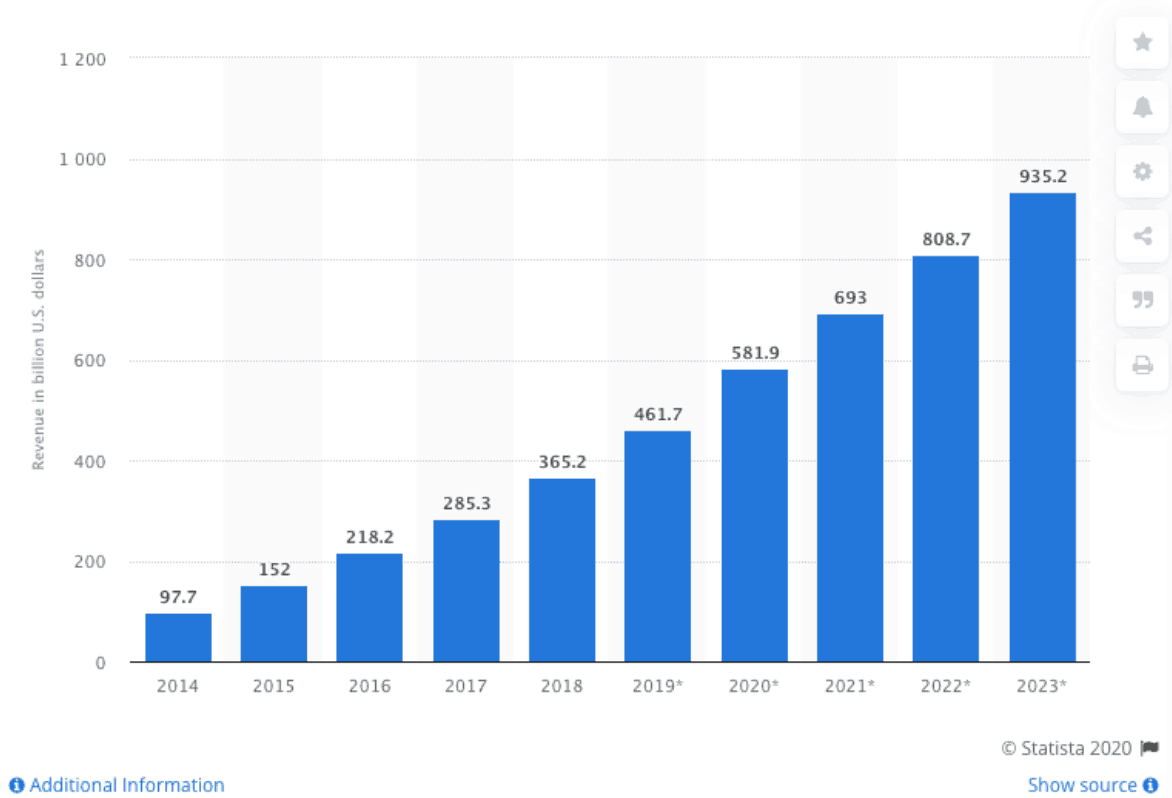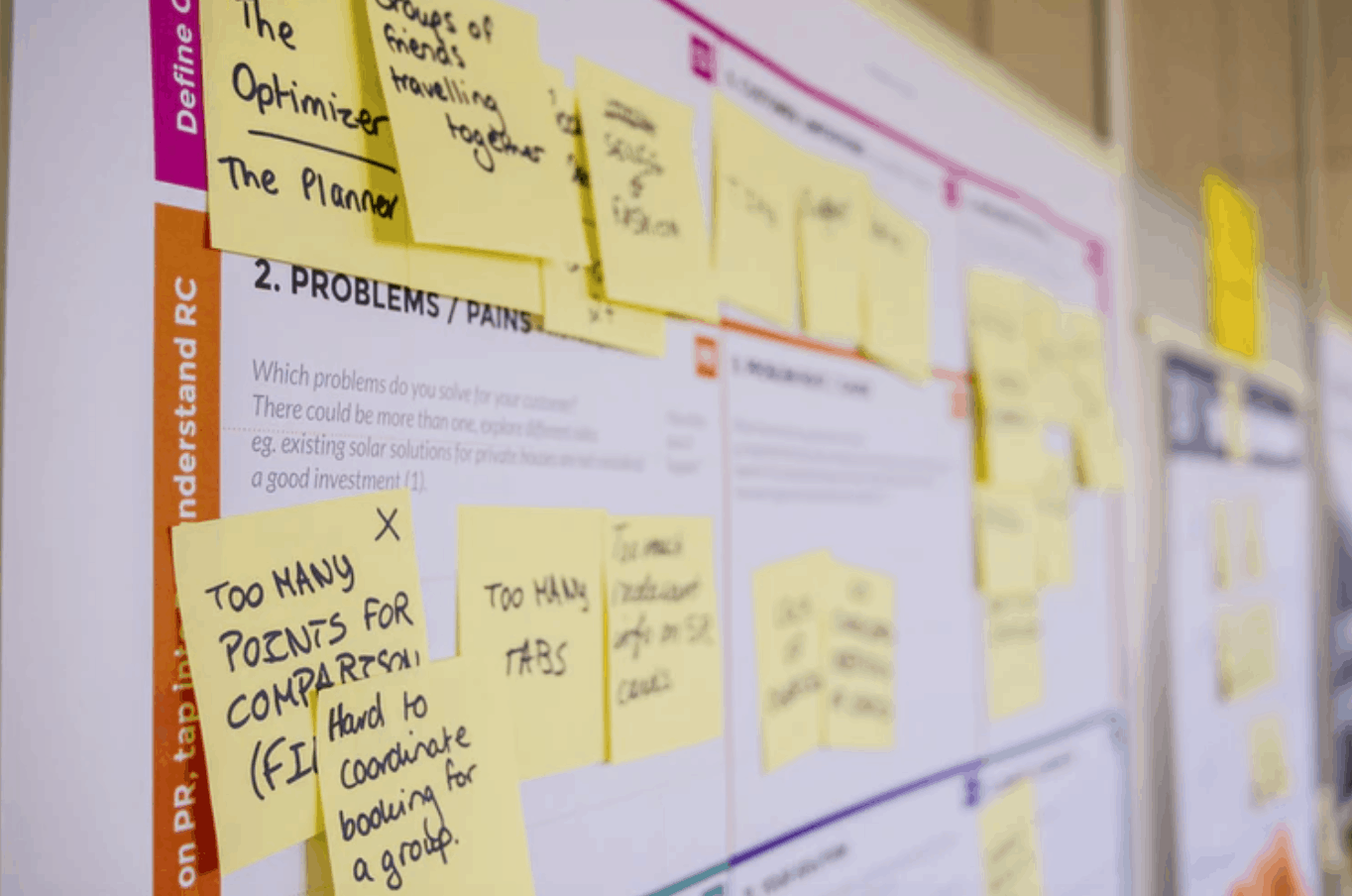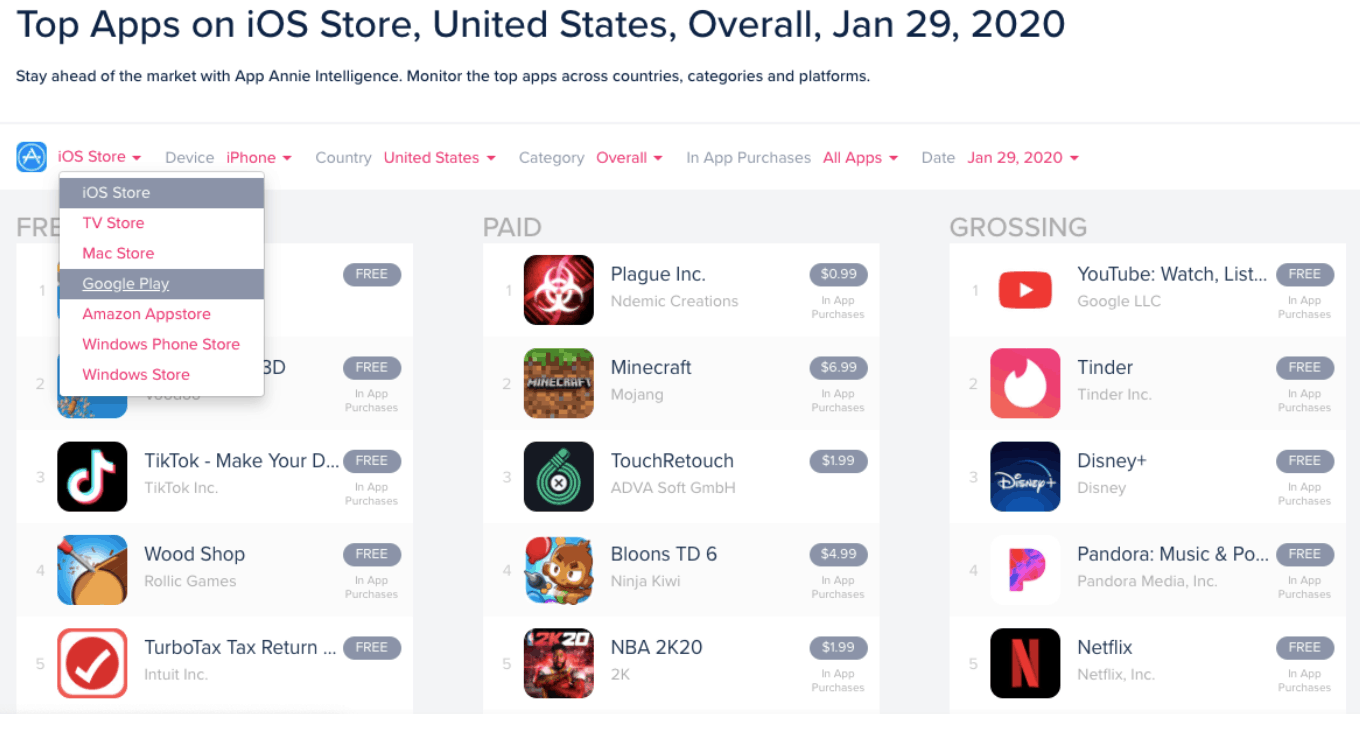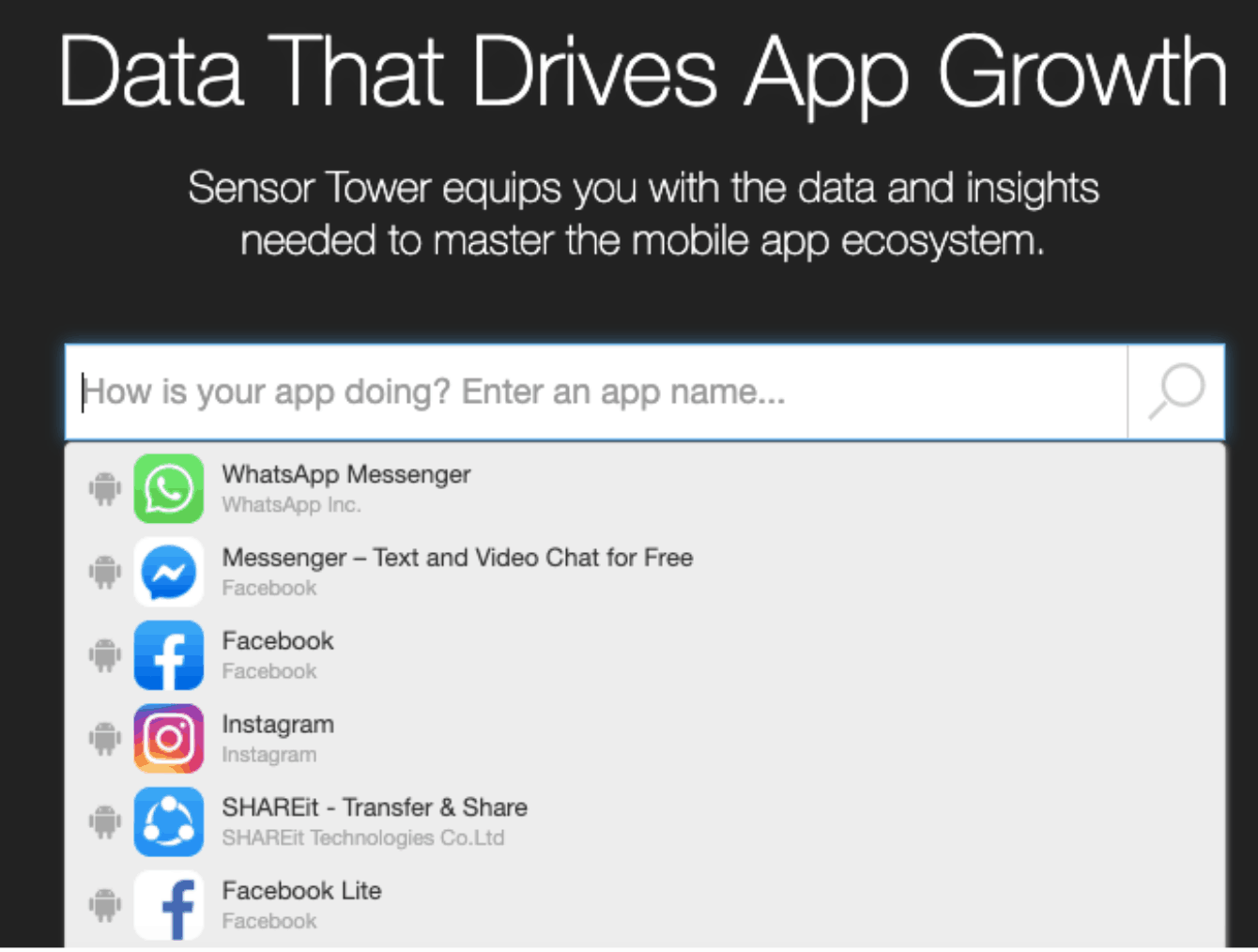Worldwide mobile app revenue is projected to hit over $580 billion USD this year.

That’s a lot of dough.
It’s no wonder so many startups are trying to get on the app game.
The problem is, everybody thinks they have the next best idea for a mobile app, but few know how to act on it and grow it into a viable business.
Every mobile app on the market today started with an idea, but not every idea makes for a good app.
The key to success is knowing the difference.
So whether you’re looking to lead with mobile first or are becoming more and more convinced that an app is the best way to scale your business, this post is for you.
Today, we’ll walk you through the five steps needed to get your mobile app idea to where you’re ready to start strategizing toward a launch.
Let’s get to it:
Conduct Thorough Research
Having an app idea is one thing – confirming that your idea is able to stand up in the ever competitive, ever growing app market is quite another.
It’s too risky building something that has no research or significant thought put behind it.
Before getting in too deep, you need to ensure your app idea is worth the time, money and effort needed to bring it to life, so that you don’t regret wasting precious resources.
This starts with research…
Step 1. Identify Pain Points

First thing’s first: before diving into detailed qualitative research, you need to confirm what problem it is that you’re trying to solve.
Not only that, but is that problem worth solving?
You may have identified that your industry is large and growing, but where does your app come into play within that market?
If there is no problem, for which your app is the solution, you really don’t have a product.
So before you go any further, think long and hard about the goal behind your app and what value and benefits it’s bringing to the table.
Step 2. Confirm Product-Market Fit
Building something without doing any market research is a surefire way to the startup graveyard.
You need to be able to support your theories.
The first thing you need to determine: Is there a market for my app?
What you’re really wanting to know is: Is there demand? A decent-sized population? Do other solutions exist? Can I make money? This is all relevant information to determine whether or not to proceed.
Having no clear product-market fit is the top reason why so many businesses end up failing.
Some ways you can conduct initial market research, include:
- Researching online industry journals and reviewing the latest reports
- Running a search on Google Trends to gauge general interest in the industry you’re targeting
- Conducting keyword research using a tool like Moz or Ahrefs for advanced search data
- Conducting polls and surveys to gauge initial interest
- Talking to industry experts to get a sense of the health and projections of your market
The goal is to gather as much information you can about your potential market and your ability to scale an idea here. You want to see if people are actively looking for a solution like the one you want to offer.
Don’t stop there though; once you’ve gathered your initial data, you’ll need to calculate the total size of your market.
Known as the total addressable market (TAM), this is going to give you the total market demand (and revenue opportunity) for your app.
There are different ways to calculate this, and to varying degrees of accuracy. Initially, however, it’d be appropriate to work with general industry research and data reports—using either the External Research or Top-Down approach.
Step 3. Review The Competitive Landscape

Now that you know there is a market for your app, you should see what kind of noise is already happening in that space.
You want to perform a bit of an analysis by gathering all the insights and data you can on your competitors—that is, similar apps in your space that are targeting the same problems and users that you are.
What are they doing well? What are they doing poorly? What commonalities in features or business model can you uncover?
Start by going online and doing some social listening.
Go to their social media profiles and read comments left by visitors, search for their brand or product names in the search bar, and search relevant hashtags.
Next up, reviews. Check out online reviews from sites, like ProductHunt, Capterra or Crunchbase. And app stores! Even if you only plan to build an iOS app, don’t overlook the insights you can gain via comments left in Google Play, Amazon Appstore, etc.
You can also benefit from taking a look at where your competitors sit on the top charts. App Annie is a great resource for this:

Even if you don’t see any direct competition, you may be able to gain some valuable insights from those popular apps that are trending.
You can gain even more insights using a tool like SensorTower. By searching for your competitor’s app, you can see how many downloads they have, what keywords they’re using and how their reviews have trended overtime.

Take all the data you’ve gained and analyze how the various solutions stack up against one another. From there, you have a better grasp on what the expectations are for an app like this and what you can improve upon as you plan to build your own.
At this point, you can also perform a SWOT analysis to clearly map out how you fare in the current market and competitive landscapes.
Step 4. Conduct Early User Research
Now that you’ve got a decent handle on your competitive landscape, you’ll want to circle back to your specific users. It’s time to talk to some people who are likely to identify with the pain points you pointed out early on.
Start by identifying your target audience and defining your user persona. Then, figure out how you can engage with them to gain the qualitative data you’re looking for.
Here is what you’ll want to uncover:
- How they feel about the identified problem
- What solutions they’re using to solve the problem today
- How satisfied or dissatisfied they are with the current solution
- How likely they are to pay for a better solution
You can gather these types of insights in many ways; some more popular options at this stage would include: running surveys or polls, holding focus groups, jumping into forums, and even conducting one on one interviews.
What you’re looking to do is to get more direct confirmation that can support what you’ve been uncovering already in terms of what might interest people about your potential product.
If you currently have a non-mobile business, and are adding an app to your existing offerings, talking to current customers would also be a great idea.
You will conduct additional user research once you’ve got a prototype complete as well, so this early research should get you all warmed up!
Prove Your Hypothesis
So you have your idea, you’ve identified a problem, you’ve confirmed your market and you’ve spoken to your users – you’ve got a lot of quantitative data and decent reassurance that you’re really onto something…
Now it’s time to further solidify your hypothesis by proving that your idea can hold its own, generate traction and become something that lasts.
Step 5. Run Your Riskiest Assumption Test

This is where we really dig in. You develop the riskiest hypothesis (the one that’s most likely to cause issue if it’s found to be untrue) you have about your app and test it to see if it rings true.
We’ve covered how to conduct your RAT in the past, but here’s a summary of the steps you’ll need to take:
- Thoroughly Understand Your Business Model
- Decide on Your Hypothesis
- Experiment and Evaluate
That first step is key.
Some of your business models may be coming together from the research you’ve already done, but certain aspects, like how you plan to monetize your app and your projected cost structure, may be coming up for the first time. Now’s the time to plan all of that out.
Build Your Mobile Strategy
With all of the data, proof and validation you have in hand, you should now be confident enough to move forward with your app idea.
Whether you want to get in touch with a mobile app development and design agency or begin planning how you’ll execute the build on your own, just know that this is not the time to lose momentum.
Validating your idea is only one of eight other complex steps for building a mobile app. So roll up your sleeves and get to work – you’re in this for the long-haul now!



